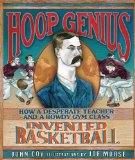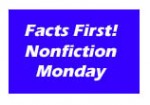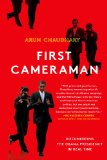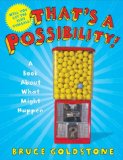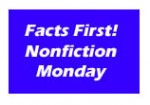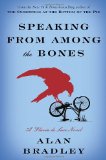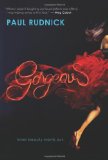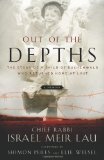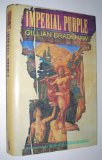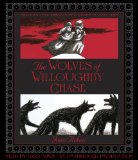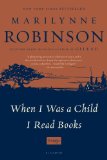 When I Was a Child I Read Books
When I Was a Child I Read Books
by Marilynne Robinson
Farrar, Straus and Giroux, New York, 2012. 206 pages.
Starred Review
When I checked out this book, I expected a heart-warming memoir from someone I’ve been told is an outstanding writer. (I really must read her novels. I own at least one.)
Instead, I found scholarly and intellectual essays about a wide variety of things. Reading, yes, but also religion, justice, cosmology, ideology, liberalism, imagination, community, freedom. . .
I read it slowly, and the essays are on different topics, which I’m afraid is an obstacle to remembering all that was in this treasure-house of a book. But I did come back to it eagerly, and every time I dipped into it, it left me thinking deeply.
The essay I remember most distinctly, was, of all things, “The Fate of Ideas: Moses.” In it, she points out that the Mosaic Law, which we often think of as harsh, was much kinder to the poor and downtrodden than modern laws, and particularly than laws in England before America was founded.
Moses (by whom I mean the ethos and spirit of Mosaic law, however it came to be articulated) in fact does not authorize any physical punishment for crimes against property. The entire economic and social history of Christendom would have been transformed if Moses had been harkened to only in this one particular. Feudalism, not to mention early capitalism, is hardly to be imagined where such restraint was observed in defense of the rights of ownership. Anyone familiar with European history is aware of the zeal for brutal punishment, the terrible ingenuity with which the human body was tormented and insulted through the eighteenth century at least, very often to deter theft on the part of the wretched. Moses authorizes nothing of the kind, nor indeed does he countenance any oppression of the poor….
These laws would preserve those who were poor from the kind of wretchedness More describes by giving them an assured subsistence. While charity in Christendom was urged as a virtue — one that has always been unevenly aspired to — here the poor have their portion at the hand of God, and at the behest of the law. If a commandment is something in the nature of a promise (“Ten Commandments is an English imposition; in Hebrew they are called the Ten Words), then not only “you will not be stolen from” but also “you will not steal” would be in some part fulfilled, first because the poor are given the right to take what would elsewhere have been someone else’s property, and second because they are sheltered from the extreme of desperation that drives the needy to theft. The law of Moses so far values life above property that it forbids killing a thief who is breaking and entering by daylight (Exodus 22:2).
More along those lines are found in “Open Thy Hand Wide: Moses and the Origins of American Liberalism”:
It is striking to note how protective, even tender, comparable Old Testament laws are toward debtors. This is Deuteronomy 24:10-13: “When you make your neighbor a loan of any sort, you shall not go into his house to fetch his pledge. You shall stand outside, and the man to whom you make the loan shall bring the pledge to you. And if he is a poor man, you shall not sleep in his pledge; when the sun goes down, you shall restore the pledge that he may sleep in his cloak and bless you; and it shall be righeousness to you before the Lord your God.” The Geneva Bible has a note that makes the law gentler yet. It says, “As though ye wouldst appoint what to have, but shalt receive what he may spare.” No one can read the books of Moses with any care without understanding that law can be a means of grace. Certainly this law is of one spirit with the Son of Man who says, “I was hungry and you fed me. I was naked and you clothed me.” This kind of worldliness entails the conferring of material benefit over and above mere equity. It means a recognition of and respect for both the intimacy of God’s compassion and the very tangible forms in which it finds expression….
The tendency to hold certain practices in ancient Israel up to idealized modern Western norms is pervasive in much that passes for scholarship, though a glance at the treatment of the great class of debtors now being evicted from their homes in America and elsewhere should make it clear that, from the point of view of graciousness or severity, an honest comparison is not always in our favor….
At present, here in what is still sometimes called our Calvinist civilization, the controversies of liberalism and conservatism come down, as always, to economics. How exclusive is our claim to what we earn, own, inherit? Are the poor among us injured by the difficulties of their lives, or are the better among them braced and stimulated by the pinch of want? Is Edwards undermining morality when he says “it is better to give to several that are not objects of charity, than to send away empty one that is”? Would we be better friends of traditional values, therefore better Christians, if we exploited the coercive potential of need on the one hand and help on the other? There is clearly a feeling abroad that God smiled on our beginnings, and that we should return to them as we can. If we really did attempt to return to them, we would find Moses as well as Christ, Calvin, and his legions of intellectual heirs. And we would find a recurrent, passionate insistence on bounty or liberality, mercy and liberality, on being kind and liberal, liberal and bountiful, and enjoying the great blessings God has promised to liberality to the poor. These phrases are all Edwards’s and there are many more like them.
Here’s a paragraph I liked from the essay “Imagination and Community”:
When definitions of “us” and “them” begin to contract, there seems to be no limit to how narrow these definitions can become. As they shrink and narrow, they are increasingly inflamed, more dangerous and inhumane. They present themselves as movements toward truer and purer community, but, as I have said, they are the destruction of community. They insist that the imagination must stay within the boundaries they establish for it, that sympathy and identification are only allowable within certain limits. I am convinced that the broadest possible exercise of imagination is the thing most conducive to human health, individual and global.
And here’s a section from that same essay about the nature of education:
From time to time I, as a professor in a public university, receive a form from the legislature asking me to make an account of the hours I spend working. I think someone ought to send a form like that to the legislators. The comparison might be very interesting. The faculty in my acquaintance are quite literally devoted to their work, almost obsessive about it. They go on vacation to do research. Even when they retire they don’t retire. I have benefited enormously from the generosity of teachers from grade school through graduate school. They are an invaluable community who contribute as much as legislators do to sustaining civilization, and more than legislators do to equipping the people of this country with the capacity for learning and reflection, and the power that comes with that capacity. Lately we have been told and told again that our educators are not preparing American youth to be efficient workers. Workers. That language is so common among us now that an extraterrestrial might think we had actually lost the Cold War.
The intellectual model for this school and for most of the older schools in America — for all of them, given the prestige and influence of the older schools — was a religious tradition that loved the soul and the mind and was meant to encourage the exploration and refinement of both of them. I note here that recent statistics indicate American workers are the most productive in the world by a significant margin, as they have been for as long as such statistics have been ventured. If we were to retain humane learning and lose a little edge in relative productivity, I would say we had chosen the better part.
I love it when she waxes eloquent about books:
Over the years I have collected so many books that, in aggregate, they can fairly be called a library. I don’t know what percentage of them I have read. Increasingly I wonder how many of them I ever will read. This has done nothing to dampen my pleasure in acquiring more books. But it has caused me to ponder the meaning they have for me, and the fact that to me they epitomize one great aspect of the goodness of life….
I have spent literal years of my life lovingly absorbed in the thoughts and perceptions of — who knows it better than I? — people who do not exist. And, just as writers are engrossed in the making of them, readers are profoundly moved and also influenced by the nonexistent, that great clan whose numbers increase prodigiously with every publishing season. I think fiction may be, whatever else, an exercise in the capacity for imaginative love, or sympathy, or identification.
I love the writers of my thousand books. It pleases me to think how astonished old Homer, whoever he was, would be to find his epics on the shelf of such an unimaginable being as myself, in the middle of an unrumored continent. I love the large minority of the writers on my shelves who have struggled with words and thoughts and, by my lights, have lost the struggle. All together they are my community, the creators of the very idea of books, poetry, and extended narratives, and of the amazing human conversation that has taken place across millennia, through weal and woe, over the heads of interest and utility….
I belong to the community of the written word in several ways. First, books have taught me most of what I know, and they have trained my attention and my imagination. Second, they gave me a sense of the possible, which is the great service — and too often, when it is ungenerous, the great disservice — a community performs for its members. Third, they embodied richness and refinement of language, and the artful use of language in the service of the imagination. Fourth, they gave me and still give me courage. Sometimes, when I have spent days in my study dreaming a world while the world itself shines outside my windows, forgetting to call my mother because one of my nonbeings has come up with a thought that interests me, I think, this is a very odd way to spend a life. But I have my library all around me, my cloud of witnesses to the strangeness and brilliance of human experience, who have helped me to my deepest enjoyments of it.
I didn’t intend to quote so much! But that gives you an idea of what’s found here. This isn’t light reading; it’s deep and thought-provoking. She’s coming from a Christian and intellectual perspective and I found her words stirred up ideas I’d never thought about before.
fsgbooks.com
Buy from Amazon.com
Find this review on Sonderbooks at: www.sonderbooks.com/Nonfiction/when_i_was_a_child_i_read_books.html
Disclosure: I am an Amazon Affiliate, and will earn a small percentage if you order a book on Amazon after clicking through from my site.
Source: This review is based on a library book from Fairfax County Public Library.
Disclaimer: I am a professional librarian, but I maintain my website and blogs on my own time. The views expressed are solely my own, and in no way represent the official views of my employer or of any committee or group of which I am part.

